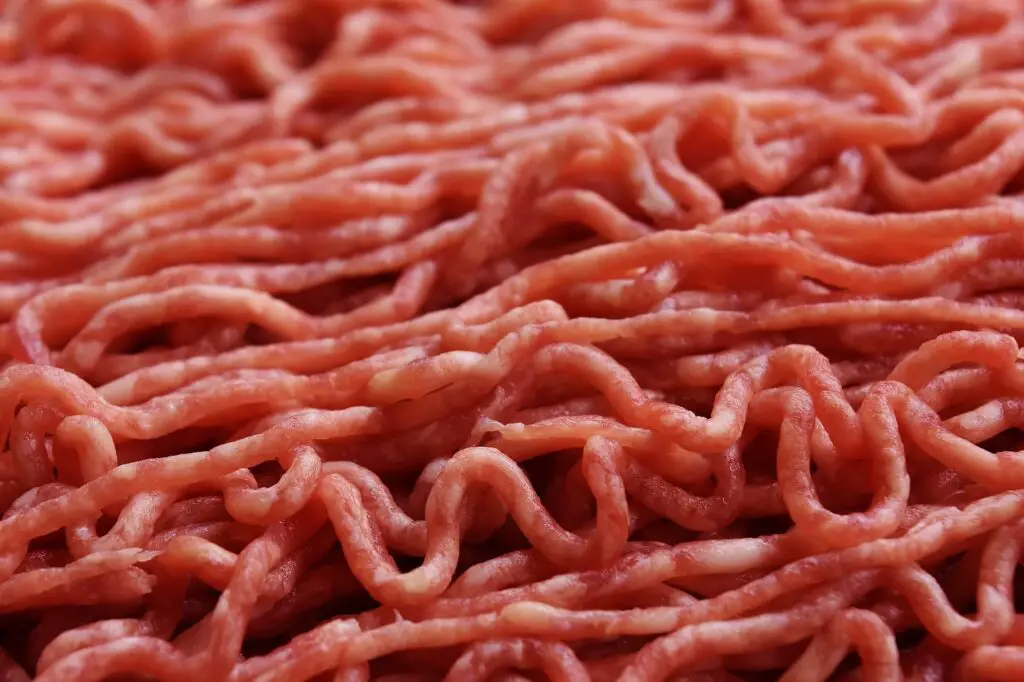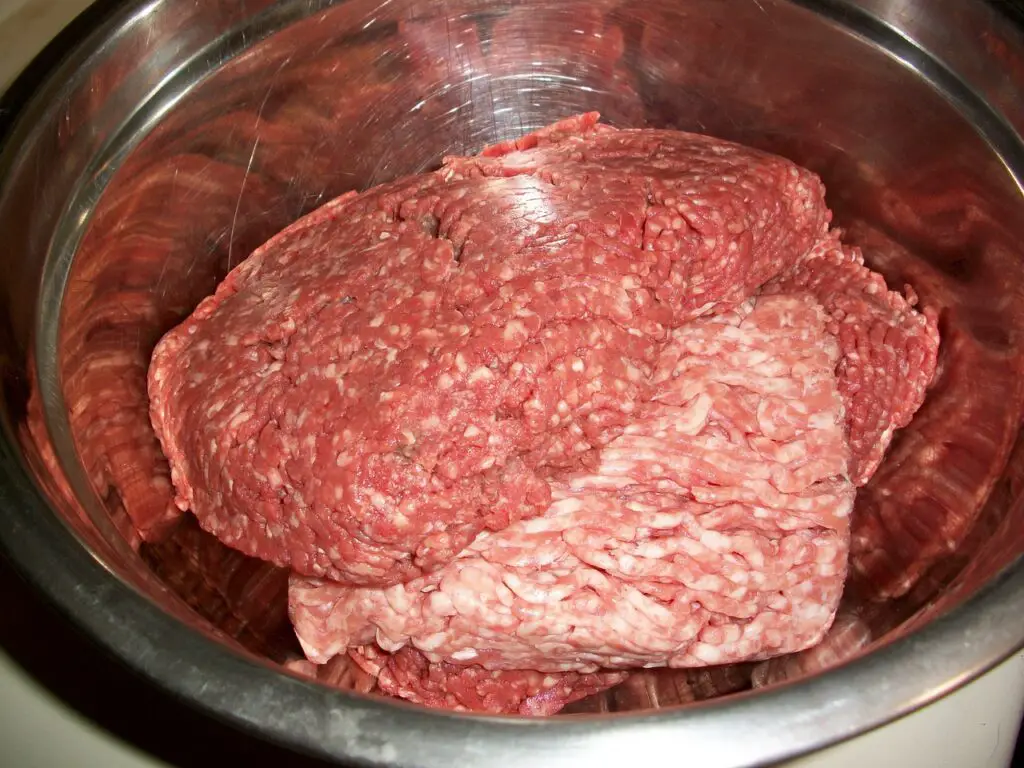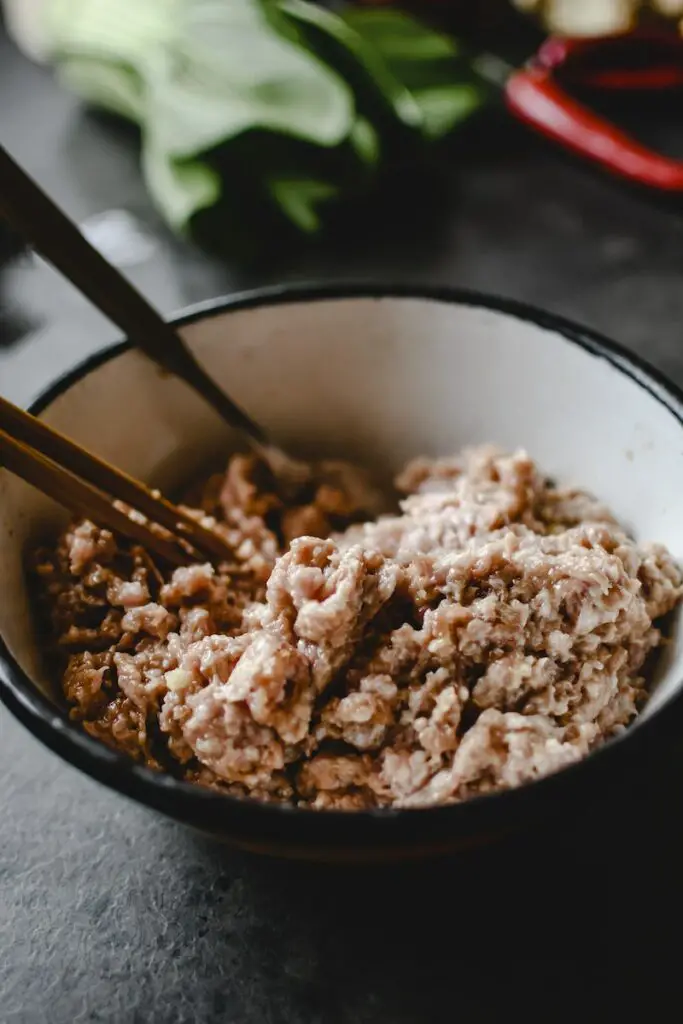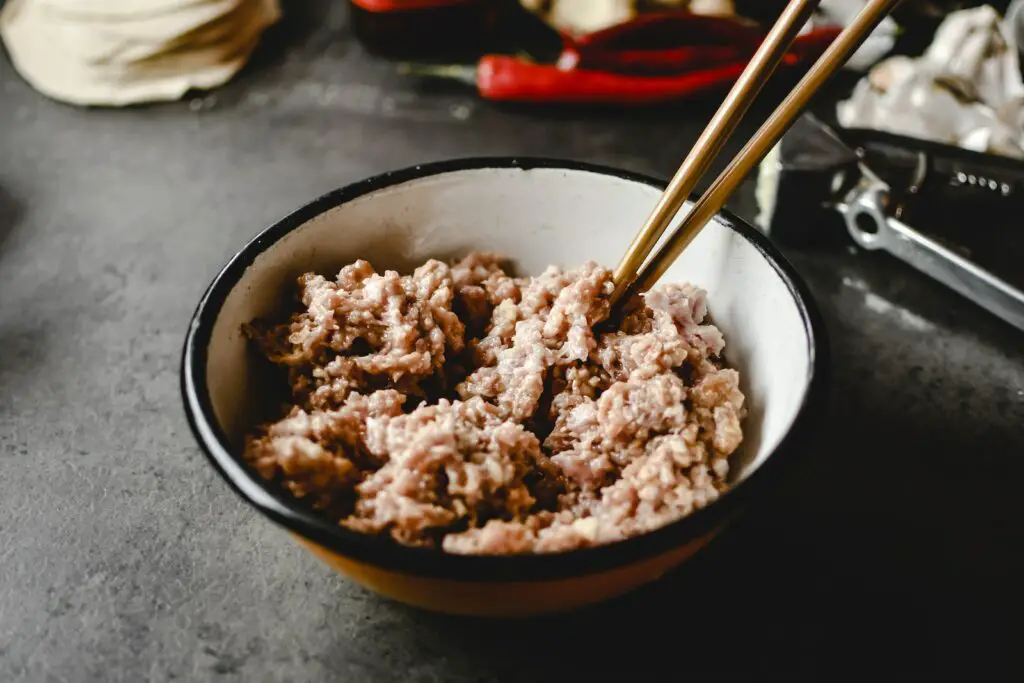
Ground pork is a popular ingredient in many dishes, but it can be difficult to tell if it has gone bad. Consuming spoiled meat can lead to food poisoning and other health issues, so it is important to know how to recognize the signs of bad ground pork.
One of the most reliable ways to tell if ground pork is bad is by its smell. Fresh ground pork should have a mild, slightly sweet odor, while spoiled meat will have a strong, pungent smell that is often described as sour or ammonia-like. If the meat smells off or unpleasant, it is best to discard it.
Another way to determine if ground pork is bad is by its appearance. Fresh pork should be pink or pale in color, with no gray or brown spots. If the meat has a slimy texture or appears discolored, it may be spoiled and should not be consumed. It is also important to check the expiration date on the package and to store the meat properly to prevent spoilage.
Table of Contents
Identifying Bad Ground Pork

Ground pork is a popular ingredient in many dishes, but it can go bad quickly if not stored properly. Here are some signs to look for to determine if your ground pork has gone bad:
Smell
One of the easiest ways to tell if ground pork is bad is by its smell. If it has a sour or sulfur-like odor, it’s likely spoiled and should be discarded.
Color and Texture
Fresh ground pork should be pink in color and have a slightly sticky texture. If it looks dull or has discoloration, it may be a sign of spoilage. Additionally, if it feels slimy or has a grainy texture, it’s likely gone bad.
Packaging
Check the packaging of the ground pork for any signs of damage or leaks. If the package is bloated or has a foul odor, it’s best to avoid it altogether.
Gray or Green Meat
If the ground pork has a grayish or green tint, it’s a clear sign that it has spoiled and should not be consumed.
Nose Test
Your senses can be your best tool in determining if ground pork is bad. Give it a sniff and if it smells off, sour, or rotten, it’s best to discard it.
In summary, if you notice any signs of spoilage such as a foul odor, slimy texture, or discoloration, it’s best to err on the side of caution and discard the ground pork. Trust your senses and always prioritize food safety.
Understanding Food Spoilage

Food spoilage refers to the process where food becomes unfit for human consumption due to the growth of microorganisms or chemical changes. Spoilage can occur in any type of food, including ground pork. When food spoils, it can cause foodborne illnesses, which can be harmful to human health.
Bacteria and mold are the most common causes of food spoilage. Bacteria grow rapidly in warm and moist environments, while mold thrives in cooler temperatures. Spoiled meat can also contain harmful bacteria, such as Salmonella and E. coli, which can cause food poisoning.
There are several signs to look out for when trying to determine if ground pork is bad. These include:
- Appearance: If the ground pork is discolored or has a slimy texture, it may be spoiled.
- Smell: If the ground pork has a sour or ammonia-like odor, it may be spoiled.
- Texture: If the ground pork is sticky or has a mushy texture, it may be spoiled.
- Expiration date: If the ground pork has passed its expiration date, it may be spoiled.
It is important to note that not all spoiled food will have visible signs of spoilage. Therefore, it is crucial to handle food properly and to cook it thoroughly to kill any harmful bacteria.
To prevent food spoilage, it is recommended to store ground pork in the refrigerator at 40°F or below. Ground pork should be consumed within 1-2 days of purchase or within the expiration date. It is also important to properly clean and sanitize all utensils and surfaces that come into contact with raw meat to prevent bacteria growth and cross-contamination.
In summary, understanding food spoilage is crucial in preventing foodborne illnesses. By knowing the signs of spoilage and properly handling and storing food, individuals can reduce their risk of consuming spoiled meat and becoming sick.
Recognizing Symptoms of Food Poisoning

Food poisoning is a common illness that can occur when consuming contaminated food. Ground pork is no exception, and it can cause food poisoning if not handled or cooked properly. Symptoms of food poisoning usually occur within a few hours to a few days after consuming contaminated food.
The most common symptoms of food poisoning include nausea, vomiting, and diarrhea. These symptoms can be mild or severe, depending on the severity of the contamination. In some cases, people may also experience abdominal pain or cramping.
If someone has consumed ground pork that is contaminated, they may experience symptoms such as vomiting, diarrhea, and abdominal pain. It is important to note that not everyone who consumes contaminated food will experience symptoms of food poisoning. However, those who do may experience a range of symptoms that can be uncomfortable and even debilitating.
If someone suspects that they have food poisoning, they should seek medical attention immediately. A healthcare professional can help diagnose the illness and provide treatment to alleviate symptoms. In some cases, hospitalization may be necessary to treat severe cases of food poisoning.
In summary, recognizing symptoms of food poisoning is important to ensure that those who have consumed contaminated ground pork receive the necessary medical attention. Symptoms such as nausea, vomiting, and diarrhea are common, and those who experience these symptoms should seek medical attention as soon as possible.
Proper Storage of Ground Pork
Proper storage of ground pork is important to ensure that it remains fresh and safe to eat. Here are some tips on how to store ground pork properly:
- Store ground pork in the refrigerator or freezer immediately after purchasing it from the store. Do not leave it at room temperature for more than 2 hours.
- If you plan to use the ground pork within a few days, store it in the refrigerator in its original packaging. Make sure that the temperature of the refrigerator is set to 40°F or below.
- If you don’t plan to use the ground pork within a few days, store it in the freezer. Ground pork can be stored in the freezer for up to 4 months. Make sure that the temperature of the freezer is set to 0°F or below.
- When storing ground pork in the freezer, make sure that it is wrapped tightly in plastic wrap or aluminum foil to prevent freezer burn. Alternatively, you can use airtight containers or freezer bags.
- Always check the expiration date on the package before purchasing ground pork. Make sure that the expiration date is not close or has already passed.
- Look for ground pork that has been inspected by the USDA. This ensures that the pork is safe to eat.
- The shelf life of ground pork can vary depending on storage conditions. Always use your best judgment and discard any ground pork that looks or smells bad.
- When thawing ground pork, do not leave it at room temperature. Thaw it in the refrigerator or under cold running water.
- The sell-by date on the package is not an expiration date. Ground pork can still be safe to eat for a few days after the sell-by date, as long as it has been stored properly.
By following these tips, you can ensure that your ground pork stays fresh and safe to eat.
Assessing Quality and Freshness
When it comes to ground pork, it’s essential to assess its quality and freshness before using it in any recipe. Here are a few things to look for:
- Color: Fresh ground pork should be pinkish-red in color. If it appears grayish or brown, it may be spoiled or oxidized and should not be used.
- Smell: Ground pork should have a mild, sweet smell. If it has a strong, unpleasant odor, it may be spoiled and should not be used.
- Texture: Fresh ground pork should be moist and slightly sticky. If it feels dry or slimy, it may be spoiled and should not be used.
- Best-by date: Check the best-by date on the package. If it has expired, the ground pork may not be fresh and should not be used.
- Storage: Make sure the ground pork has been stored properly in the refrigerator or freezer. If it has been left at room temperature for an extended period, it may be spoiled and should not be used.
It’s also important to note that ground pork, like other ground meats, should be cooked to a minimum internal temperature of 160°F to ensure that any harmful bacteria are destroyed.
Assessing the quality and freshness of ground pork is similar to assessing other ground meats such as beef, turkey, and chicken. However, ground pork tends to spoil faster than other meats, so it’s essential to be extra cautious when using it. By following these guidelines, you can ensure that your ground pork is fresh and safe to use in your favorite recipes.
Cooking and Consuming Ground Pork Safely
When it comes to cooking and consuming ground pork, there are a few key things to keep in mind to ensure that it is safe and delicious. Here are some tips to follow:
Cooking Ground Pork to the Right Temperature
Cooking ground pork to the right temperature is crucial to ensure that it is safe to eat. According to the USDA, ground pork should be cooked to an internal temperature of 160°F (71°C) to kill any harmful bacteria that may be present. Use a meat thermometer to check the temperature of the thickest part of the meat.
Handling and Storing Ground Pork Safely
When handling ground pork, it’s important to follow basic food safety guidelines to prevent cross-contamination. This means washing your hands and any surfaces that come into contact with the meat before and after handling it. It’s also important to store ground pork in the refrigerator or freezer until you’re ready to cook it.
Avoiding Undercooked Meat
Eating undercooked meat can be dangerous, as it can contain harmful bacteria that can cause foodborne illness. To avoid undercooked ground pork, make sure that it is cooked to the proper temperature (160°F/71°C) and that there is no pink or red meat left in the middle.
Cooking Pork in Recipes
When cooking ground pork in recipes, it’s important to follow the instructions carefully to ensure that it is cooked to the right temperature. If a recipe calls for ground pork to be browned before adding it to a dish, make sure that it is fully cooked before adding it to the other ingredients.
Consuming Cooked Pork
Once ground pork has been cooked to the proper temperature, it is safe to eat. However, it’s important to consume cooked pork within a few days of cooking it to avoid any potential foodborne illness. Store cooked pork in the refrigerator or freezer until you’re ready to eat it.
By following these tips, you can ensure that your ground pork is cooked and consumed safely and deliciously.
Frequently Asked Questions
When it comes to ground pork, it’s important to know how to tell if it’s gone bad. Here are some frequently asked questions about ground pork and its safety:
How long can ground pork be left at room temperature?
Ground pork should never be left at room temperature for more than two hours. Bacteria can grow rapidly at room temperature, which can cause the meat to spoil and become unsafe to eat.
How long does ground pork last in the refrigerator?
Ground pork can last up to five days in the refrigerator if it’s stored properly. It’s important to keep the meat in an airtight container or wrapped tightly in plastic wrap to prevent exposure to air and bacteria.
Can ground pork contain parasites?
Yes, ground pork can contain parasites, such as Trichinella spiralis. This parasite can cause trichinosis, which can lead to muscle pain, fever, and other symptoms.
Can ground pork contain salmonella?
Yes, ground pork can contain salmonella, which is a type of bacteria that can cause food poisoning. It’s important to cook ground pork thoroughly to kill any bacteria that may be present.
What does the “sell by” date on ground pork mean?
The “sell by” date on ground pork refers to the date by which the meat should be sold by the retailer. It’s not an expiration date, but rather a guideline for retailers to follow. It’s important to use or freeze ground pork before the “sell by” date to ensure its freshness.
How does ground pork deteriorate over time?
Ground pork can deteriorate over time due to exposure to air and bacteria. This can cause the meat to develop an off odor and slimy texture. It’s important to check ground pork for any signs of spoilage before consuming it.
What is a soaker pad in ground pork packaging?
A soaker pad is a small absorbent pad that’s often included in ground pork packaging. It’s designed to absorb any excess moisture that may accumulate in the packaging, which can help to keep the meat fresh for longer.
Can refrigeration prevent ground pork from going bad?
Refrigeration can help to slow down the growth of bacteria on ground pork, which can help to prevent it from going bad. It’s important to store ground pork in the refrigerator at 40°F or below to ensure its safety.